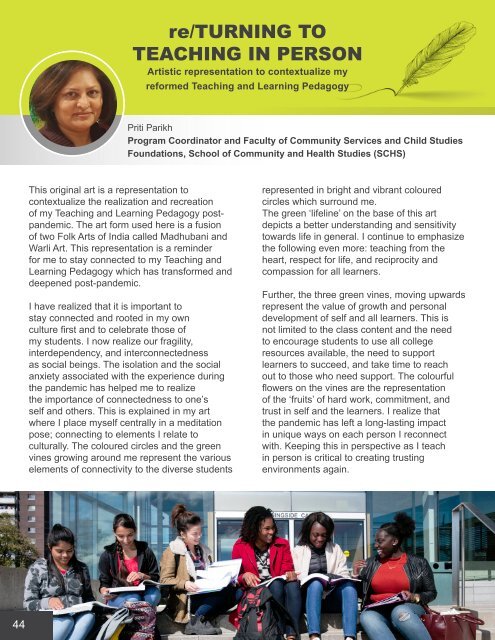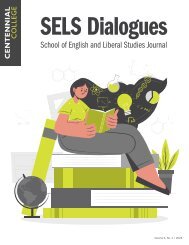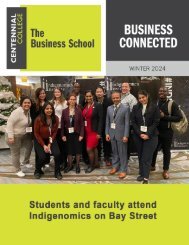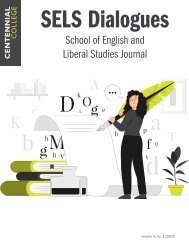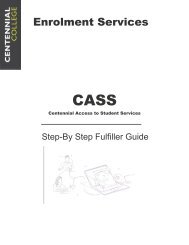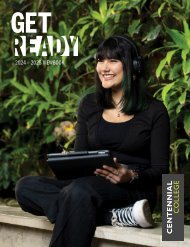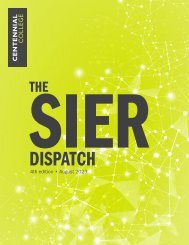The Teaching and Learning Innovation Digest - May 2023
Welcome to a truly special edition of the Teaching and Learning Innovation Digest! Our seventh annual academic publication has assumed an incredibly meaningful shape and form for a number of reasons. Not only did we receive an enthusiastic response with over 30 submissions via our institutional broadcast, but we also have consciously and intentionally embraced the principles of Universal Design for Learning by attempting to represent and celebrate the varied forms of expressions therein. From reflective essays, poetry, visual and performing arts, podcasts, video conversations to scholarly work, academic and applied research, news and updates, and interviews, this is truly a power-packed publication!
Welcome to a truly special edition of the Teaching and Learning Innovation Digest! Our seventh annual academic publication has assumed an incredibly meaningful shape and form for a number of reasons. Not only did we receive an enthusiastic response with over 30 submissions via our institutional broadcast, but we also have consciously and intentionally embraced the principles of Universal Design for Learning by attempting to represent and celebrate the varied forms of expressions therein. From reflective essays, poetry, visual and performing arts, podcasts, video conversations to scholarly work, academic and applied research, news and updates, and interviews, this is truly a power-packed publication!
Create successful ePaper yourself
Turn your PDF publications into a flip-book with our unique Google optimized e-Paper software.
e/TURNING TO<br />
TEACHING IN PERSON<br />
Artistic representation to contextualize my<br />
reformed <strong>Teaching</strong> <strong>and</strong> <strong>Learning</strong> Pedagogy<br />
Priti Parikh<br />
Program Coordinator <strong>and</strong> Faculty of Community Services <strong>and</strong> Child Studies<br />
Foundations, School of Community <strong>and</strong> Health Studies (SCHS)<br />
This original art is a representation to<br />
contextualize the realization <strong>and</strong> recreation<br />
of my <strong>Teaching</strong> <strong>and</strong> <strong>Learning</strong> Pedagogy postp<strong>and</strong>emic.<br />
<strong>The</strong> art form used here is a fusion<br />
of two Folk Arts of India called Madhubani <strong>and</strong><br />
Warli Art. This representation is a reminder<br />
for me to stay connected to my <strong>Teaching</strong> <strong>and</strong><br />
<strong>Learning</strong> Pedagogy which has transformed <strong>and</strong><br />
deepened post-p<strong>and</strong>emic.<br />
I have realized that it is important to<br />
stay connected <strong>and</strong> rooted in my own<br />
culture first <strong>and</strong> to celebrate those of<br />
my students. I now realize our fragility,<br />
interdependency, <strong>and</strong> interconnectedness<br />
as social beings. <strong>The</strong> isolation <strong>and</strong> the social<br />
anxiety associated with the experience during<br />
the p<strong>and</strong>emic has helped me to realize<br />
the importance of connectedness to one’s<br />
self <strong>and</strong> others. This is explained in my art<br />
where I place myself centrally in a meditation<br />
pose; connecting to elements I relate to<br />
culturally. <strong>The</strong> coloured circles <strong>and</strong> the green<br />
vines growing around me represent the various<br />
elements of connectivity to the diverse students<br />
represented in bright <strong>and</strong> vibrant coloured<br />
circles which surround me.<br />
<strong>The</strong> green ‘lifeline’ on the base of this art<br />
depicts a better underst<strong>and</strong>ing <strong>and</strong> sensitivity<br />
towards life in general. I continue to emphasize<br />
the following even more: teaching from the<br />
heart, respect for life, <strong>and</strong> reciprocity <strong>and</strong><br />
compassion for all learners.<br />
Further, the three green vines, moving upwards<br />
represent the value of growth <strong>and</strong> personal<br />
development of self <strong>and</strong> all learners. This is<br />
not limited to the class content <strong>and</strong> the need<br />
to encourage students to use all college<br />
resources available, the need to support<br />
learners to succeed, <strong>and</strong> take time to reach<br />
out to those who need support. <strong>The</strong> colourful<br />
flowers on the vines are the representation<br />
of the ‘fruits’ of hard work, commitment, <strong>and</strong><br />
trust in self <strong>and</strong> the learners. I realize that<br />
the p<strong>and</strong>emic has left a long-lasting impact<br />
in unique ways on each person I reconnect<br />
with. Keeping this in perspective as I teach<br />
in person is critical to creating trusting<br />
environments again.<br />
44<br />
45


